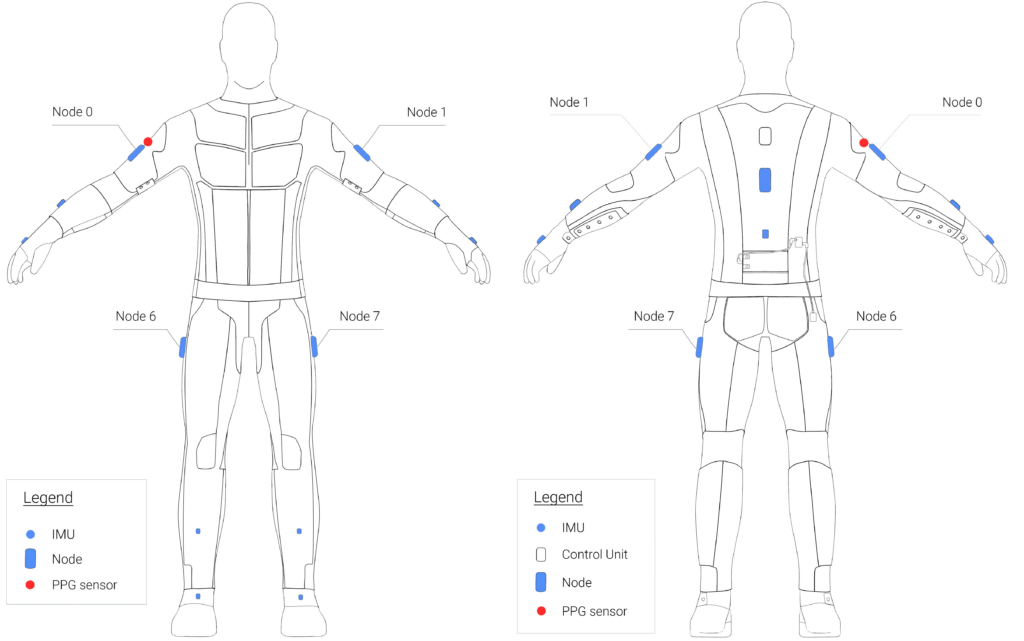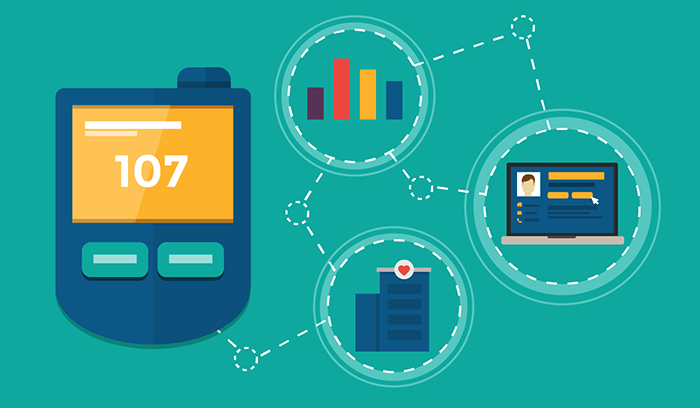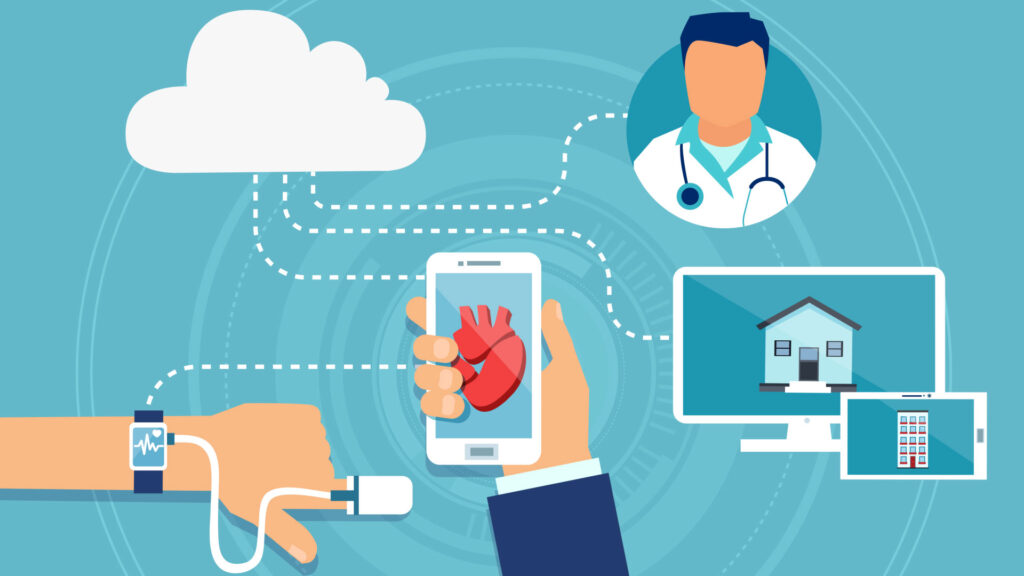The development of biosensor technologies and their active use as wearable devices promises to revolutionise the way we live, train and deliver medical care. The future holds even more exciting possibilities as biosensors continues to evolve, creating a seamless merger of immersive technologies and healthcare solutions.
This is the second in a series of articles covering biosensors. In the previous article, we’ve talked about the history of biosensors, looked at possible applications and considered the future of this technology.
In this article, we will provide a comprehensive overview of PPG sensors, their operating principles and applications that enable users to actively track biomarkers and monitor personal health parameters.
Introduction
Let’s start with a brief recap of what a biosensor is. At their core, biosensors are ingenious devices that bridge the gap between biological and digital realms.
It consists of a biological element, such as an enzyme, nucleic acid, or antibody, which interacts with a specific analyte of interest, triggering a unique biological response. This response is then converted into a measurable signal, enabling us to obtain valuable data and insights. This remarkable fusion of biology and technology enables to capture and interpret vital physiological data in real-time.
History of creation
Photoplethysmography, or PPG, is a cost-effective and simple optical measurement technique that can detect the changes in heart rate. But how did this technique come into existence? In the early 20th century, researchers began to explore the use of light to study blood flow in tissues. However, it was not until the 1970s that PPG was recognised as a valuable technique for the non-invasive monitoring of physiological parameters, particularly heart rate.
Advances in electronics and light-emitting diode (LED) technology have played a significant role in the development of PPG sensors. These technological improvements have made it possible to create smaller and more practical devices for the optical measurement of changes in blood volume.
Working principles
The working principle of the PPG sensor is quite simple and revolves around the emission of red, infrared or green light from an LED. This emitted light penetrates the skin and then reaches the blood vessels. The PPG sensor’s detector then collects the light, allowing the blood flow to be measured. The results of the PPG signal depend primarily on the flow of blood and oxygen to the capillaries with each heartbeat.

(Source- Advances in Photopletysmography Signal Analysis for Biomedical Applications)
The type of light used in the PPG sensor can vary depending on the application and the desired measurement parameters. Let’s have a look at the most commonly used types of light and how they affect the measurement process.
Red and infrared light are widely used in PPG sensors. Red light, with its impressive penetrating power, is absorbed by deoxygenated haemoglobin in the blood. This allows accurate measurement of changes in blood volume and heart rate. Infrared light, on the other hand, is ideal for monitoring blood flow in deeper tissues. These lights are used extensively in medical settings where precision and reliability are paramount.
Green light is a simpler alternative to red and infrared light. It is partially absorbed by oxygenated haemoglobin, giving an indication of changes in blood volume and blood oxygenation. Green light also offers good penetration depth, making it suitable for certain applications.

The PPG sensor in the TESLASUIT provides accurate and reliable measurements by incorporating all of the lights mentioned above. In addition, it uses advanced algorithms and signal processing techniques to provide precise and consistent results, ensuring that the data collected is trustworthy. The PPG sensor gives information about the cardiorespiratory system by calculating the user’s heart beat per minute (BPM) and pulse rate variability (PRV).
Use and benefits of PPG
Today, with the rise of wearable technology and consumer demand for health monitoring devices, PPG sensors have become more common. The integration of the PPG sensor into the wearables has opened up a world of possibilities for both VR and healthcare industries. Let’s explore its benefits and applications in each of these fields.
The PPG sensor plays a vital role in enhancing the immersive VR experience, and here’s how:

- Real-time biometric monitoring: PPG sensors capture accurate biometric data, providing real-time insights into users’ physiological responses during VR experiences. This data enables a deeper understanding of user engagement and emotional arousal, enhancing the overall immersive experience.
- Safety and performance optimisation: By integrating PPG sensors into XR training setups, instructors can ensure that trainees are performing within safe parameters, identify potential problems and provide timely support or adjustments as needed. The use of PPG sensors in XR training environments increases the overall effectiveness and safety of the training experience.
- Personalised training and feedback: PPG sensors enable personalised training programmes by tracking users’ biometric responses. This data can be analysed to provide personalised feedback, guiding users to more effective and tailored VR training sessions.
In the healthcare industry, PPG sensors integrated into the TESLASUIT offer significant benefits that are transforming patient monitoring and care. Here’s how PPG sensors are revolutionising healthcare:

- Remote patient monitoring: PPG sensors can be useful in remote monitoring of patients’ vitals. This application is growing rapidly and is particularly valuable in scenarios such as remote patient consultations and chronic disease monitoring.
- Rehabilitation and clinical research: PPG sensors provide real-time physiological data during rehabilitation and clinical research studies. This data helps healthcare professionals assess patients’ progress, monitor their stress levels and ensure their safety throughout the treatment or research period.
So, what else makes PPG a great biosensor? First and foremost, PPG is simple, reliable and inexpensive. It can be easily integrated into wearable devices to enhance VR experience and various health-related measurements. Whether it’s monitoring your heart rate or tracking other vital signs, PPG offers an easy-to-use and cost-effective solution.
Another aspect is non-invasiveness. PPG doesn’t require needles or special attachments to the body. This means that monitoring can be carried out without discomfort or inconvenience.
Conclusion
To sum up, the PPG sensor is a type of biosensor that provides an inexpensive, non-invasive and reliable optical measurement technique commonly used for heart rate monitoring.
As technology continues to advance, we can expect PPG to evolve even further. Miniaturisation, improved sensitivity and expanded capabilities are on the horizon, promising a future where PPG becomes even more integrated into our daily lives.
The integration of PPG into the TESLASUIT offers exceptional advances for both VR and healthcare industries. From enhancing VR experiences to improving patient care and monitoring, these sensors are opening up endless possibilities for immersive technologies and revolutionising the way we engage with virtual environments With the TESLASUIT at the forefront of innovation, we can expect a future where immersive experiences and healthcare solutions seamlessly merge to transform the way we live, train and deliver medical care.
References:
- Photoplethysmography and its application in clinical physiological measurement
- Advances in Photopletysmography Signal Analysis for Biomedical Applications
- A review on wearable photoplethysmography sensors and their potential future applications in health care
- Wearable Photoplethysmography for Cardiovascular Monitoring
